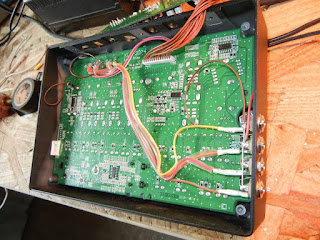The sh-09 uses an unusual key contact system that I haven't seen in many other Roland synths. I believe it was probably some type of passing phase between j-wires and rubberized contacts.
This one came to me with bent contacts which caused some keys not to sound. I also noticed that the bent contacts could also cause mis-triggering of notes: if the envelope was left open with ADSR settings, keys with bent contacts would trigger other notes when they were released. This resolved to be an issue if the lower key contact (there are 2 per note) was bent away from the lower rail.
This was a somewhat difficult synth to dis-assemble. There are a large number of screws visible from underneath, and if you just remove them all you will wind up with a big jumble of parts (transformers, circuit boards, etc) spilling out like entrails when you open it up.Nobody wants that. For that reason, I posted a few pictures of the necessary screws to remove when taking the synth apart. I count 13 all together, to remove the top cover from the bottom (metal) plate. I think I got them all here, if I missed any let me know.
 |
| sh-09 key contacts: this is an unusual setup. |
 |
| On the back panel there are 3 screws to be removed- I marked these with a white box in this photo. |
 |
| There are 10 screws here to be removed. I think I managed to list them all here. |









